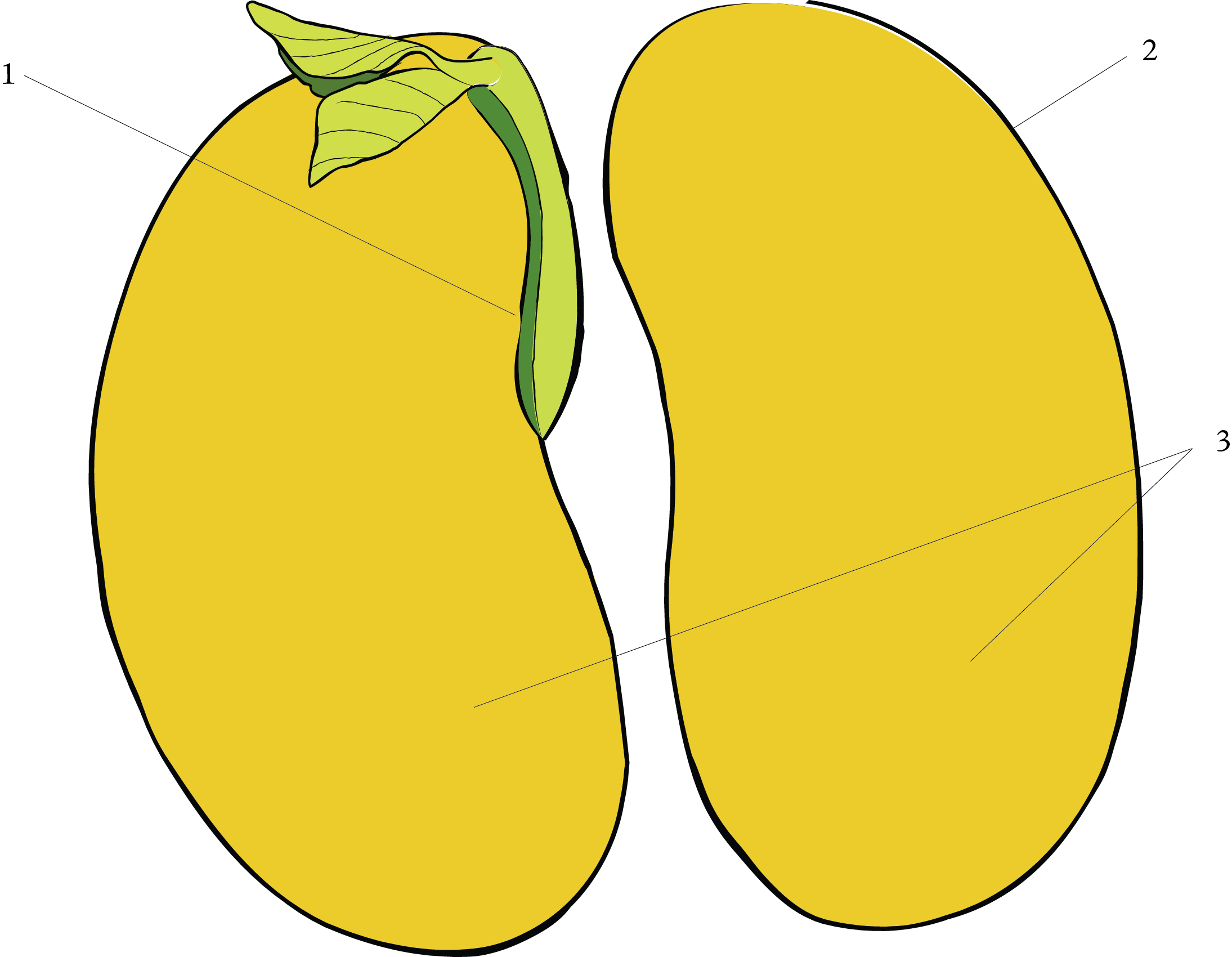Back to September 2014 Newsletter
Botany Basics: What's in a Seed?

This is the last in a series of three articles on some botany concepts. Check out our previous articles on "What's in a Flower" and "What's in a Fruit". For more information about these and other topics, visit www.seeds.ca/saveyourseeds.
1. Baby bean plant
The part in the seed that looks like a grain of rice is the root. The tiny feathery parts on the top are the first “true leaves”. Everything else – more roots, the rest of the leaves, the stem, flowers, pods, and seeds – grow from this.
2. Skin or seed coat
Protects the seed from damage and disease, and prevents rapid changes in moisture.
3. Cotyledons
Store starch to feed the baby plant until the seed germinates. They are also the “seed leaves” of the bean sprout.
|
To germinate seeds |
Moisture triggers seeds to grow |
Warmth triggers seeds to grow |
Light is needed by some seeds to germinate |
|
To store seeds |
Dry air puts seeds to sleep |
Cold makes seeds consume food slowly |
Darkness helps keep seeds dormant |
How Seeds Grow
When a seed sprouts, the root grows first. It tunnels downward, no matter which way it is planted, and anchors itself by growing side roots. Then, powered by the food stored in the cotyledons, the growing stem pushes the whole seed up and out of the ground. When the sprout emerges into the sunlight, the cotyledons turn green, and make new food through photosynthesis. They then shrivel and fall off, the “true leaves” expand, and the plant really starts to grow.
Family Relations
Why does a bean look so much like a peanut? Because beans and peanuts are both in the legume family. Other legumes like peas, chick peas, and lentils also look very similar inside. There are hundreds of plant families and their seeds are all shaped differently, but seeds all contain the same parts. We use beans for this example because they’re easy to see and easy to handle.
Why don’t old seeds grow?
There’s a living plant inside every seed and it needs food. The longer the seed ripens on the vine, the more food it stores. When the food runs out, it dies. Old seeds sometimes take longer to germinate because their low food reserves make them go dormant (like hibernating) more deeply.
Make your seeds last longer
To keep a seed alive in storage for a long time, you have to slow down the plant’s metabolism so it consumes food slower. Seeds go dormant when they’re dry and cold. This is easy to remember because it’s the opposite of what they need to germinate.
Seed savers - start strong
Harvest your seeds from healthy plants, and leave the seed or fruit on the plant as long as possible. Seeds harvested before their prime will often grow if you plant them right away, but those that have had time to store lots of food are the healthiest and longest-lasting.
Not yet a member?
An annual membership to Seeds of Diversity gives you access to our seed exchange, seed grow-out programs, and our online news.

We depend on donations to do our work.

Thank you for your support!
